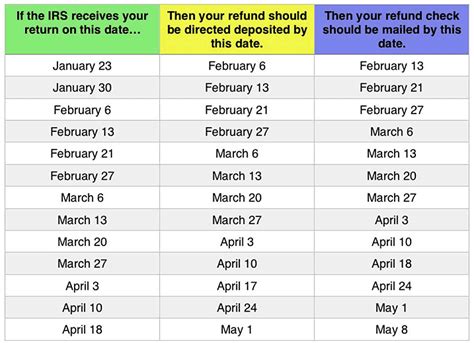How Long Does It Take To Get Your Tax Refund?
Tax season can be stressful, and one of the biggest anxieties is waiting for your tax refund. Knowing what to expect can ease your mind. This guide breaks down the factors influencing refund processing times and offers tips to track your refund's progress.
Understanding the Refund Process
The IRS aims to process most tax returns within 21 days of receiving a complete and accurate return filed electronically. However, several factors can significantly impact this timeline.
Factors Affecting Refund Processing Time:
- Filing Method: E-filing is significantly faster than mailing a paper return. Paper returns often take considerably longer to process due to manual data entry.
- Accuracy of the Return: Errors, omissions, or inconsistencies on your return can trigger delays while the IRS verifies the information. This includes mathematical errors, incorrect Social Security numbers, or discrepancies with W-2s and other tax documents.
- Claiming Specific Tax Credits or Deductions: Certain credits and deductions, such as the Earned Income Tax Credit (EITC) or the Additional Child Tax Credit, require additional review and processing, potentially lengthening the wait time.
- Identity Theft or Fraud: If the IRS suspects identity theft or fraud related to your return, processing will be delayed while they investigate. This is a crucial step to protect taxpayers from fraudulent activity.
- IRS Backlog: During peak tax season, the IRS may experience backlogs, resulting in longer processing times for all returns. Be patient and check the IRS website for updates on potential delays.
How to Track Your Refund Status
The IRS offers several ways to monitor the status of your refund:
- IRS Website: The IRS's online tool, "Where's My Refund?", is the most reliable method. You'll need your Social Security number, filing status, and the exact refund amount shown on your tax return.
- IRS2Go Mobile App: The IRS2Go mobile app provides the same functionality as the website, allowing you to check your refund status on the go.
Important Note: The IRS generally updates its tracking tools within 24 hours, but it may take a few days after e-filing or mailing your return before you can access the information. Don't panic if your refund isn't immediately reflected.
What to Do if Your Refund is Delayed
If your refund is significantly delayed beyond the expected timeframe (beyond several weeks after e-filing), consider the following:
- Check for Errors: Carefully review your tax return for any potential mistakes that may have caused the delay.
- Contact the IRS: If you've identified no errors and your refund remains delayed, contact the IRS directly. Be prepared to provide your information and tracking number. Note that wait times may be long, especially during peak tax season.
- Seek Professional Help: If you're struggling to resolve the issue independently, consider consulting a tax professional for assistance.
Tips for Faster Refund Processing:
- File Electronically: E-filing is the fastest and most efficient way to file your taxes.
- Double-Check Your Return: Carefully review your tax return for accuracy before submitting it.
- Keep Records: Maintain copies of all your tax documents and supporting information.
By understanding the factors that can impact refund processing times and utilizing the available tracking tools, you can navigate tax season with greater peace of mind. Remember, patience is key, and the IRS is working to process returns as quickly and accurately as possible.
